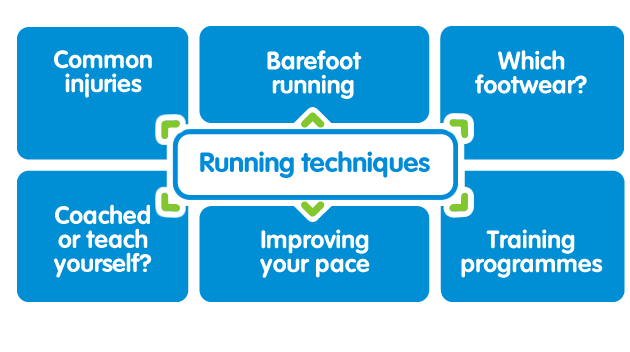Making interesting content when you think you’re in a boring industry
“I’d love to do content marketing, but my business is just too boring.” It’s an objection I’ve heard a number of times.
But in reality, I think content marketing is something that every business can and should do.
In this guide, I’ll explain how to get out of the “too boring” mind set and start creating content that people need.
We’ll start by considering what makes a business interesting and why it isn’t always something you should aspire to. Then we’ll dig into how you can go about coming up with ideas for content that people find useful.
Interesting vs boring businesses
I want you to jot down a quick list of two or three businesses that you consider to be interesting, or even exciting.
Then note down two or three that you consider to operate in a boring sector.
Expand each list by adding two or three reasons why you consider each business exciting or boring.
I can’t possibly know what’s on your list, but I’m pretty sure they’ll be a few common threads running through it.
I’d guess that your exciting list mainly features high-profile companies that are either very successful (such as Amazon), are considered disruptive to an existing industry (such as Uber) or operate in a highly unusual sector (such as SpaceX).

For your boring list, I’d expect you to go for businesses that are more commonplace. Perhaps a business that you use on a regular basis for a fairly mundane task. (A supermarket chain, for example.) Or businesses that you associate with tasks that are literally chores (a plumber or other tradesman.) Maybe you went with a sector that’s traditionally viewed as boring (such as accountancy or real estate).
Whatever’s on your final list, I’m not going to judge it as right or wrong. Instead, I’m going to use it as a tool to show you why talking about interesting businesses vs boring businesses is completely the wrong discussion when it comes to content creation.
For starters, let’s look at Red Bull. Now, if Red Bull did end up on your list, the chances are it was in the exciting section.
But why? Are energy drinks inherently exciting? I don’t think so. And I’d be surprised if you did. The reason so many people consider Red Bull an exciting brand is because of all the effort its put into associating itself with motor racing and extreme sports.
And what about SpaceX? Yes, firing rockets into space is exciting. But what about all the hardcore engineering that goes on behind the scenes? I’m sure that’s exciting for some people, but not for me, and I think most people would agree with me.
Then there’s Uber. Which is basically a taxi firm. Would your local taxi firm make it on to your list of exciting businesses? No? Then why do people consider Uber to be exciting?
In my opinion, there’s no such thing as an inherently exciting business – the way we perceive businesses depends on the way they present themselves. It’s true than some businesses find it easier to look exciting (especially those that get to launch rockets, like SpaceX). But the Red Bull example shows that any business can make itself look exciting if it has the budget to do so.
But why would a plumber based in Bromley want to be seen as exciting? Wouldn’t they much rather be viewed as reliable, hardworking and useful?
And what about an accountant based in Manchester? If you’re entrusting your business’s financial wellbeing to someone, would you rather they were exciting, or knowledgeable, reliable and useful?

The fact is, if you spend enough time and money on advertising and content marketing, you’ll be able to make people think your business is exciting.
But in reality, the return on investment you get on that spend isn’t going to be enough to justify doing it in the first place.
For most businesses, exciting vs boring shouldn’t even be a consideration. Instead, focus on creating content that people find useful. In fact, you’ll find that people very rarely consider useful content to be boring.
Being seen as useful is pretty much a superpower in business. If you can help someone solve a problem they’re facing then they’re going to love you for it. And if you can help a lot of people solve the same problem, then even better.
Forget exciting content, create useful content instead
By now, hopefully, I’ve convinced you to forget about being exciting or boring and instead focus on creating content that’s useful.
Useful content is nearly always interesting. Knowing how to properly clean your gutters isn’t exciting, but if it’s a job you need to do, then a video showing you how to do it will be interesting.
The best thing about focusing on creating useful content that’s relevant to your business is that you already have the fundamental knowledge you need. The toughest part is going to be taking that knowledge and turning it into content that works.
Here’s a quick seven step plan for coming up with ideas for useful content.
Creating useful content that people will love
1 Understand your target audience
Hopefully you should already have a good idea of the kind of person who visits your website and what they’re looking for from your business. (If you don’t, then I strongly recommend you take a look at the Understanding Your Visitors module of Online Business Training).
But when it comes to creating content, it pays to get specific with your target audience. Draw up as complete a profile as possible of the person you intend to reach before you even start generating ideas for content.
That way, your audience will always be at the heart of your content creation plans, making it less likely that you’ll veer off track.
You can learn more about building personas for your target audience in this in depth guide. But to give you a brief overview, here are the things you should take into consideration.
- Gender
- Age
- Occupation
- Income
- Family status
- Interests
How about a practical example? Well, if you were running a building services firm, you might end up with profiles that look like this.
Male, aged 30-45. Works in a management position with a good income. Married with two young children. Owns a larger home. Has basic to intermediate DIY skills.
Female, aged 24-30. Works in junior position with a moderate income. Lives in starter home/flat. Possibly cohabits, but no family yet. Has basic DIY skills.
Male, aged 60-70. Retired. Married with grown up children. Owns a residential property and a number of buy to let properties. Has basic to intermediate DIY skills, but finds he has less time/inclination to carry out work himself.
By their very nature, these profiles are going to be fairly broad. But even so, you can still see how each profile has different needs and is likely to be interested in different kinds of content.
For example, we might want to target the first group with DIY guides to help them manage smaller jobs around the home. The idea here would be to have people familiarise themselves with our fictional building services firm. That way, when a bigger job comes up, they’ll be more likely to turn to us than one of our rivals.
2 Understand your market
The best content gets links. It gets links from relevant industry publications and it gets links from news organisations.
But content will only get those kinds of links if it’s a) interesting/useful, b) well-presented and c) original.
Now, it can be hard to bring all those three elements together. But the best way to start is by researching and seeing what’s already out there in terms of content. Buzzsumo is a great tool which makes it easy to discover popular content. Give it a try and you’ll soon get a solid picture of what kind of content is successful in your niche.
If you can spot a gap that hasn’t already been covered by a piece of content, or can put a new spin on an existing idea, then you’re on to a winner.
You may also find it pays to keep things local, especially if the main focus of your business is on a specific area. For example, an accountant creating free guides to be used by small businesses probably isn’t going to get coverage on the Guardian. But spin it with a local angle and that story is more than likely to be picked up by local news sites.
3 Goals for your content
At this stage, it pays to spend a bit of time thinking about what you want to achieve with your content. The best way to do this is by creating SMART goals for your work.
SMART stands for specific, measurable, attainable, relevant (to your overall goals as a business) and time-bound.
It’s a great way to set goals, because it keeps you focus and makes sure you can always define whether you succeeded in what you were trying to do.
So don’t approach content creation thinking “I want to create content that will boost sales”. A goal that vague is doomed to failure.
Instead, aim for things like “creating an online resource that gets covered by two local news sites and four industry-specific publications”.
Or “create a blog post that achieves 10,000 views and 100 email newsletter sign ups”.
Thinking about goals at this stage will help guide your idea generation process. But you may find you end up adjusting those goals when you know what kind of content you’ll be creating.
That’s fine. Just make sure your final goals always meet the SMART criteria.
4 Generate ideas
By now you should have a pretty good understanding of who your content needs to reach in order for it to be successful. Both in terms of the potential customers you’re looking to reach, and the influencers you’ll need to get to promote your content in order for it to be successful.
This gives you a good starting point for idea generation because you’ll already understand what these groups are interested in.
So what you’re looking for are content ideas that are relevant to your business, useful to your potential customers, of interest to influencers and that have a realistic chance of helping you achieve the goals you set out above.
A great way to do this is to start by considering broad topic ideas and then branching out from there.
So for example, if you’re selling running gear online you might end up with a list of ideas that looks something like this.

So you can see that from just one main topic, we’ve developed six subtopics. We can then further subdivide those ideas to grow our list of potential topics even further.
Once you’ve got a list of potential topic ideas, it’s time to start researching again. See how other companies have tackled these areas. What works? What doesn’t? What can you improve on?
Refine your ideas until you hit on something that’s going to be interesting to your target audience, but isn’t something they’ve seen before.
5 Create content
For a lot of people this can be the hardest part of the process.
There are three options here. The first is to make sure you create content in a format you’re comfortable with. So if you’re good at graphic design, you might want to focus on image-based content. This guide’s a great place to start.
If you’re a good writer then blogs, ebooks and written guides are obvious areas to look at. You can learn more about creating a successful business blog in this guide.
If verbal communication is your strong point, or you want to create really helpful visual guides then I’d strongly recommend you create videos. Many businesses on a tight budget overlook video because they think it’s going to be expensive. But in reality, you’ll already own a lot of the kit required to create quality videos and it’s a great way to make your content come alive. Check out this guide to getting started with video marketing to see how easy it really is.
Your second option is to outsource things to an agency. The obvious advantage here is that you’ll have access to people who possess skills you don’t. And you’ll probably get influencer outreach as part of the deal too.
The downside is that this approach is going to cost you more. But if you’ve got a budget for this kind of thing, then it’s worth considering.
Just a final note on using an agency – Even if you plan on using one, I’d recommend you carry out steps one to four of this guide. Understanding the kind of content that will work for your business will make it easier for you to weed out the bad agencies from the good ones.
Your third option is essentially the middle ground between the first two options. So you do what you’re able to yourself, and then outsource other work to freelancers.
So for example, a strong writer might create an ebook and then employ a freelance designer to create any images that are needed for it.
Or if you know a topic really well, but need a hand turning your knowledge into helpful guides, then you can hire a freelance copywriter.
Prices for freelancers can vary greatly and often the more you pay, the higher quality of work you’ll get. But it is possible to get quality end results for a small outlay by using freelance communities like Fiverr. If you decide to go down that route, check out this guide to making sure you end up with a good final product before you commit to anything.
As a final note on content creation – really, I could go on for pages more about the right way to do things. This is the kind of subject people write books on. But there’s also a lot of really useful stuff out there on the web. So if you hit an impasse, or worry that you’re doing something wrong, get Googling. You’re bound to find a relevant guide that’ll help you out of whatever hole it is you’ve stumbled into.
6 Promote your content
You should already have a good idea of the kind of people and publications that will be receptive to the content you’ve created. The next step is to get it out there.
There’s not enough room here for me to go in depth on pitching your content. But what I will say is that you need to make it as easy as possible for people to understand how they will benefit from sharing or linking to your content.
Get straight in there and explain why your content is ideal for their readers or followers – that’s the main thing publications and influencers are really interested in when it comes to third-party content.
If you’re contacting someone who’s busy and has a lot of people trying to get their attention, you’re really going to need to stand out.
So if you’re emailing, that means your subject line and your first sentence need to be spot on.
But if you have someone’s contact details, don’t be afraid to pick up the phone either. A phone pitch can work wonders, especially if it’s to someone you’ve spoken to in the past.
Finally, check out this guide to contacting influencers on Twitter, as well as this guide to conducting content outreach the right way.
7 Measure, test, review, repeat
Once you’ve completed the content promotion phase, it’s vital you take the time to assess whether you’ve achieved what you set out to.
So go back and look at those SMART goals you set before you created your content and see how you did.
Where you able to get the coverage you wanted? Did that blog post get the number of email sign ups you’d targeted?
If you didn’t meet your goals, take the time to understand what went wrong. Any feedback you received as part of the outreach process is going to be very useful here. If people said “I’d love to share/write about this but…” pay particular attention to what comes after the but.
If you find that your pitches aren’t getting a response at all, then you may have been targeting the wrong people. Or it might be that your pitches weren’t great. Or it could be that your content needs work before people will engage with it.
On the other hand, if things do go well and you do meet or even exceed your targets, you need to think about how you’re going to do the same again next time. Can you create similar content that tackles another subject? Can you cover a similar topic but in a different format? And of course, there’s no such thing as a perfect content marketing campaign, so don’t forget to identify any mistakes you made during your successful campaign and make sure you avoid them next time.
Summing up
Hopefully, I’ll have managed to convince you that creating content is something that you can and should be doing.
And if you started this article thinking that your company is “too boring to create interesting content” then hopefully I’ve changed your mind about that too.
If you focus on being a useful resource to potential customers, then although you might never launch a rocket into space, you’ll always be able to find a loyal audience that is interested in what you have to say.
And remember – creating good content takes practice. Don’t expect to set the world alight with your first effort. Monitor what you do, find out what works and then keep refining your content until you’re consistently hitting your goals.
